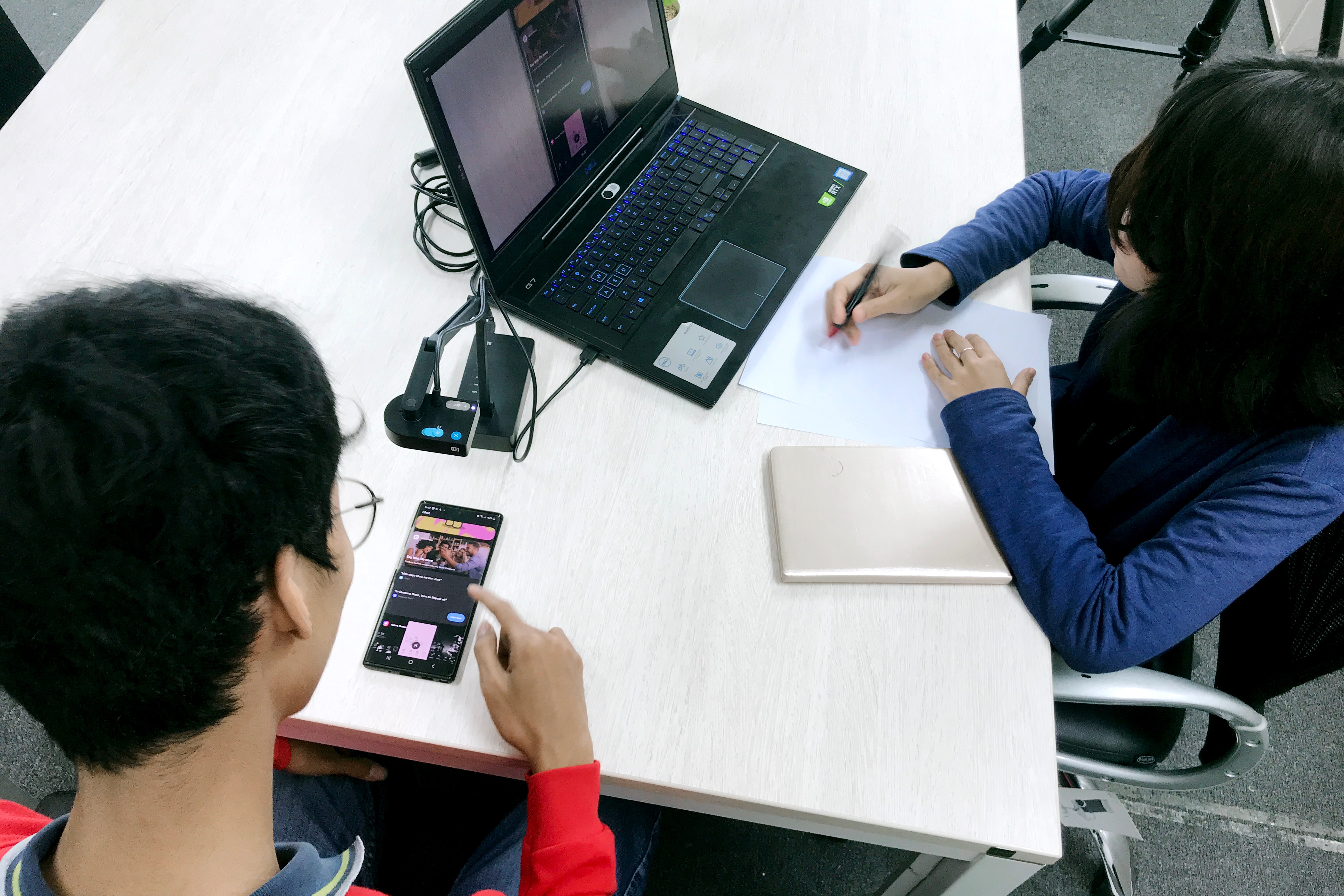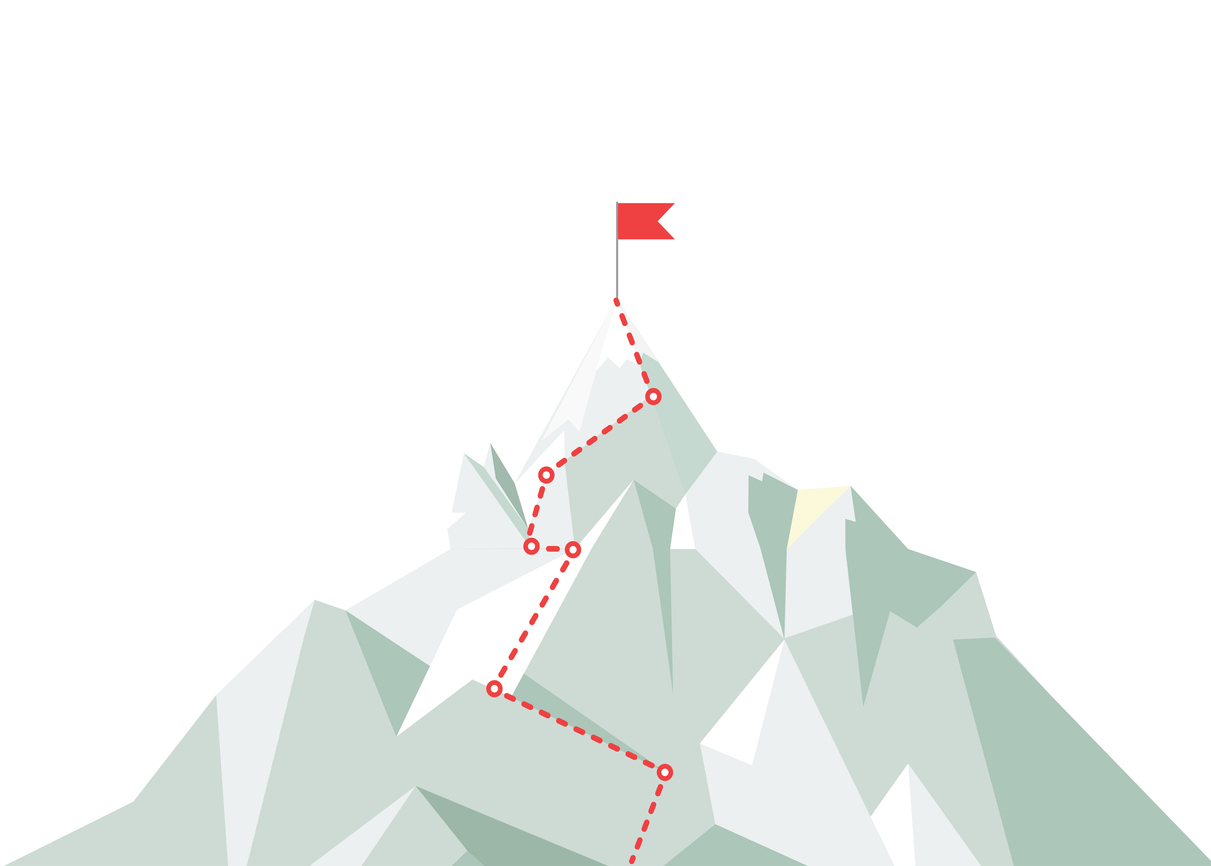I’ve recently joined Fruto as Director of User Experience Design having previously worked as a UX designer and in product development teams at organisations including the University of Oxford, Elsevier, the UK Government's National Cyber Security Centre, Nominet, the King's Fund, and the Nuffield Trust amongst others either as part of the in-house team, or in an agency capacity.
And if there’s one thing that experience has taught me, it’s this: The earlier Design is brought into the product development, the better for the outcome of the whole product.
Secondary to that, is that a shared process is key to the designer/ product/ developer relationship being a success.
This is also borne out by research such as that in the McKinsey Quarterly (2018) which discussed ‘the business value of design’.
And, as “the greatest capitalist in history" (Fortune), former President of IBM, Thomas J. Watson Jr., said:
“We are convinced that good design can materially help a good product realise its full potential. Design can help make a good business great.
In short, we think good design is good business.”
In this post, I’m going to share my thoughts on why involving user experience design early in the product development process is so important, 3 common reasons that it’s not, and finally, some quick takeaway actions and advice on how to go about introducing UX design (earlier) into your own product development process if you’re yet to do so.
But first, let’s just clarify what we’re actually referring to when we talk about design and development in the context of product development...
What is product development?
Generally speaking, the term “Product Development” refers to all aspects of conceiving and bringing a product into existence and throughout the course of its lifecycle.
But within this overarching process, there are distinct phases and roles that are considered the domain of either the Design, Development or the Product Team (not to forget other important roles, such as QAs, Scrum Master and DevOps, but the for sake of simplicity we’ll keep it to those core 3 supersets).
So let’s unpack that a little before we go any further.
Design (user experience design) - Understanding users' problems through research and designing a solution(s) based on best addressing their needs and aligning to business goals
Development (web development) - Architecting the technical solution design, programming systems and quality checking code, to enable the desired user experience and business logic
Product (product management) - Responsible for the success of the product from a business outcome perspective, as well as often bringing the team together under a common set of goals and vision to ensure those outcomes, often working closely with UX design to marry business and user goals. They should look to harness the expertise of that team.
Product development - the process of working together in teams, applying strategy, approach and process to make decisions and achieve the desired outcomes for the product; the art of developing good products, through the organisation of people and methodology.
The need for a shared process
Ensuring you have a shared understanding of what the design/development process entails within your organisation (and the difference between user experience design (UX) and user interface (UI) design) is critical in ensuring that Design gets the seat at the table it deserves when it comes to product development.
The best product development processes value design, aim to understand it and involve Design right from the start - including setting the strategy - with everyone working together throughout.
And the best product development team - and it is all one team, really - consists of representatives from Product (product management), Development (programmers, builders) and the UX designers (research and design), among others.
Even if this isn’t the structure that you’re currently working in, Design should be brought in as soon as possible.
…and a shared design brief
If there are Designers that understand core business concepts, they should absolutely be included Product strategy.
And when starting projects to execute on that strategy, we should create a Design Brief that is produced with a Product Manager, in order to understand the specific outcomes and expectations of the business.
This can include reference to other research, what success looks like, the problem statements and other insights to sketch out the area of focus - but never the solution, as we are yet to test our assumptions of the problem with users.
The key to this process is having an open mind and looking to test assumptions with users.
The Design Brief should consider 6 main areas:
Vision or expectation of what is needed
Who it (the product/feature) is for (i.e. the user groups)
Outcomes for the business and the end user
What success looks like (What metrics are we or will we measure this by)
The assumed problem via Problem Statements, that will be tested as part of the discovery phase (e.g. What problems are we trying to solve? What assumptions do we have?)
The existing data or evidence we already have that tells about this problem, if any
Once you’ve agreed on the brief, you can then move on to thinking about what questions need asking to understand this problem, and what assumptions might we need to validate.
Calculating how much UX design effort is needed
A good rule-of-thumb ratio to determine how much UX effort is needed, is the more weight something has that affects core aspects of the product, the more effort needs to go into the UX side.
For example, designing a product page or checkout process for an e-commerce website should have a very high degree of design and research effort because they are the most critical part of the customer journey. Getting it wrong could result in thousands of lost revenue for the business (though this isn’t to say other areas of the website should have no design or research effort)
Now we’ve explored why it’s so important that Design is involved early in the development process, let’s have a look at why that might be the case, and what you can do about it.
Why design is so often late (or uninvited) to the product development party
In my experience - both in-house, and externally working at an agency - there are 3 common reasons for design not being involved early enough:
Lack of organisational UX maturity
Treating all projects as needing ‘tactical’ solutions
Assuming you already know the answer(s)
Here’s a quick look at each, along with my advice on what to do about it if you find yourself in such a situation…
1. Immature product and/or organisational UX
The number one reason is that, fundamentally, the (product or) organisation lacks UX maturity.
Many companies are in danger of working in the past, where a ‘good idea’ and someone to build it was a good enough investment case. But times change and things evolve. We want to make the best decision we can, and we need evidence and experts to help us do this.
Evolve or be engulfed by evolution
Look no further than the disrupters of the last 10 years who have got this spot on. Experience is a fast-changing game you can’t be left blind or lacking. As the old saying goes, “customers vote with their feet”, or rather, in this case, clicks.
Think of HMV, Blockbuster, in persona travel agencies, and the yellow pages, all replaced by a better addressing of needs and usability.
If you’re currently operating at a low level of maturity (levels 1-3) and the business places little value on user experience and human-centred design, it’s easy to see why design may be seen as an afterthought rather than a strategic game changer.
So, what can you do about it?
Firstly, get clued-up on design maturity. Ensure you understand what it is, and why it exists. Read our blog post on it, and work out where you and others think your company is on the ladder.
Then, take some action on the UX front. Get an expert review done, or user test a current product. Alternatively, perhaps get some user interviews done to understand what the needs are and where the value lies for your users and customers. This will open your eyes to where the problems you might have been missing are.
You can also look at getting some external help. A friendly chat with someone bringing fresh eyes (and ideas) to the table might be just what you need to help set you in the right direction.
2. Often treating projects as tactical rather than strategic
In a similar vein, the strategic value Design brings when it comes to product development is often overlooked when all development work is treated as “tactical”.
Tactical design can often be characterised as having short term goals and chasing quick wins - often by shortcutting process, or without evidence - and sometimes these changes are dictated rather than being addressed by experts.
This approach of overusing “tactical design” can result in a whole manner of issues - ranging from wasted time and effort at best, to lack of competitiveness and loss of customers and revenue.
“Risk comes from not knowing what you are doing”
- Warren Buffett.
All projects need the right kind of tactical design, but it should be fairly rare, and to happen too frequently if often a symptom of UX immaturity or lack of a clear (shared) strategy.
Having a solid strategy is crucial when it comes to product development - and that it needs to come before the project starts - whether that’s improving an existing project, or building something new.
Strategy is something that should be reviewed at regular periods, both at a project and product level.
The “Additional Time/Cost” Fallacy
Often the pushback here is to do with the perceived cost (time and/or budget) that including a UX design stage will have on things. But that mindset is based on false economies.
2 UX Designers given 3 months gain key insights that will not only significantly reduce risk to the investment, but also likely increase value (see the McKinsey report mentioned earlier).
Compared that with the cost and risk of asking a Development team (comprising at least 5 developers) to build on an invalidated idea for 6-months, and the opportunity cost is obvious.
A stitch in time saves nine, as the saying goes - especially if it turns out your developers are tackling the wrong problem.
Treat your projects like you would an investment because that’s exactly what it is. If you are savvy, you do your research, you reduce your risk, and you look for the most growth or value.
As Benjamin Franklin once said, “When it comes to investing, nothing will pay off more than educating yourself. Do the necessary research and analysis before making any investment decisions.”
Ideally, the business will be setting objectives that cascade down. These can increase the need to get things right, to hone in, and for evidence-based decision-making. In more mature companies there may even be specific objectives to ensure research, and evidence based decisions are valued like the value they bring.
When it comes to matching UX design with business objectives, make an effort to partner with Product Managers, they will be looking to efficiently execute on these objectives, and you (Design) can help them.
Include them in the research process so that they can fully understand the reasoning behind things. Let them see how you can ‘shift the fog’ and they are more likely to ensure that things are followed through.
Speaking of research…
3. Assuming market research provides all the answers
The third most common reason Design isn’t brought in early enough is that there’s the assumption that existing research (and/or assumptions) already provides the answers.
But market research and design research are two very different things and although market research may provide a starting point, it should not be used in place of a dedicated UX research phase wherever possible, the two are different lenses.
It’s important that the focus is on the metrics that need to change - and not potential solutions - in the early stages of the process. Things needs to be researched in the optimal order.
Example: News site paywalls
The Times and many other broadsheet news publications have paywalls on their sites in order to build revenue because they don’t want to fill their sites with frustrating ‘clickbait’ or ads (which can be seen to cheapen the content).
This approach assumes that as the user is happy to pay for a physical newspaper, they will also be happy to do so to access the same content digitally. But this is unlikely to be the case with so much free news content.
So how do you keep competitive in this non-traditional, changing marketplace?
Well, this is where research enables you to find out what content users really value, or to run multi-variant testing to measure how users respond to small differences across a selection of designs.
Where competition is rife, sometimes the smallest innovations and gains can tip the balance.
Existing technology may cover the ‘middle point’ in a journey, but to design you need context, and to improve the experience you need to understand the whole journey, end to end.
This is what I think disrupters also do really well because there’s often areas of the journey that aren’t catered for, or haven’t been examined for innovation opportunities.
Often, overall value is worth more than the sum of all these parts; there’s value in completeness or a collective.
We often see this, especially when it comes to sectors like healthcare, where there are lots of different users in the overall journey and all areas of the journey working together seamlessly is crucial.
From a product development perspective, UX designers should take learning from research to marry-up with the business goals. But as we’ve said before, this needs to happen before development starts to be of use.
Key takeaways and actions
If you were in any doubt before, hopefully you now understand just why it’s so important that user experience design is involved throughout the product development process, and the need to think about things from a bigger-picture, strategic perspective, rather than a purely “project”, or “tactical” view.
Not taking a strategic view of the product as a whole when deciding on the approach can result in wasted time and effort producing product features that don’t really improve the user experience or tackle the underlying issue(s). And this is further compounded when decisions are made based on outdated or non-specific research, assumptions, or perhaps worst still, a notion.
Demonstrating the value that UX design brings to the product development process can be difficult - especially if you have low UX maturity - so finding alternative ways to communicate its value is critical.
The first thing to do would be to understand whether your Product team actually understands why Design needs to be involved earlier. (If they don’t, maybe try sharing this article with them!)
For product development teams to be effective, you need to talk about how you (Product/Development and Design) can help each other - you are one team after all.
As a starting point, ask the questions of what you are currently doing, and what you could be doing differently. Ask each other, “what could you be doing to help me?”
Particularly with Product Managers, ask them what they need to do - and why - and align any UX activities that could help.
With developers, understand where UI or design issues are sucking up their time and work with them to address their needs better. For example, perhaps a component library would solve lots of problems for them, or perhaps they are trying to get buy in to start using the development equivalent of this for what already exists.
Ultimately, as designers, we know what developers want to achieve - so the key is to find ways to communicate how to help them do it, in the best way possible for the user. That way, everybody wins.
Need more support? Get in touch to find out more about how we can help.





